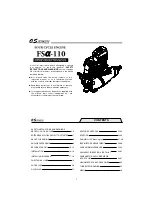
Maintenance section
99
Coolant Water
Hard water, or water with high levels of calcium and
magnesium ions, encourages the formation of
insoluble chemical compounds by combining with
cooling system additives such as silicates and
phosphates.
The tendency of silicates and phosphates to pre-
cipitate out-of-solution increases with increasing
water hardness. Hard water, or water with high lev-
els of calcium and magnesium ions encourages the
formation of insoluble chemicals, especially after a
number of heating and cooling cycles.
DOOSAN prefers the use of distilled water or
deionized water to reduce the potential and severi-
ty of chemical insolubility.
MINIMUM ACCEPTABLE WATER
Water Content
Limits gr/gal(ppm)
Chlorides (Cl)
2.4(40) maximum
Sulfates (SO
4
) 5.9(100)
maximum
Total hardness
10(170) maximum
Total solids
20(340) maximum
PH
5.5 to 9.0
ppm = parts per million
Using water that meets the minimum acceptable
water requirement may not prevent drop-out of
these chemical compounds totally, but should mini-
mize the rate to acceptable levels.
Antifreeze
Make proper antifreeze additions.
Adding pure antifreeze as a makeup solution for
cooling system top-up is an unacceptable practice. It
increases the concentration of antifreeze in the
cooling system which increase the concentration of
dissolved solids and undissolved chemical inhibitors
in the cooling system. Add antifreeze mixed with
water to the same freeze protection as your cooling
system.
Use the chart below to assist in determining the
concentration of antifreeze to use.
Antifreeze Concentrations
Protection Temperature
Concentration
Protection to -15°C (5°F)
30% antifreeze and 70% water
Protection to -23°C (-10°F)
40% antifreeze and 60% water
Protection to -37°C (-34°F)
50% antifreeze and 50% water
Protection to -51°C (-60°F)
60% antifreeze and 40% water
















































